Are you someone who loves exploring hidden natural wonders? If you’ve ever dreamed of seeing places like Ipasha Falls in Montana, this guide is for you. Picture Ipasha Falls not just as a spot to visit, but as a chance to challenge yourself on a multi-day trek through Glacier National Park’s rugged trails.
Getting to Ipasha Falls isn’t easy, but it’s worth it. You’ll need good gear, thorough preparation, and a love for the wilderness. I’ll help you plan your trip, including essentials like camping in the backcountry. Get ready for rushing waters, exciting rappelling, and peaceful photography moments.
- Related article: Waterfall Havens in Montana
Join me and discover the stunning Ipasha Falls, inspiring you to keep exploring and appreciating the beauty of our world. Let the adventure begin!
7 Key Takeaways on Ipasha Falls
- This multi-day trek to Ipasha Falls from Siyeh Bend in Glacier National Park is not for the faint-hearted, taking hikers through rustic trails into the backcountry.
- Hikers need moderate to high conditioning and proper equipment to tackle the challenging trek to the falls, while also being prepared for backcountry camping if staying overnight.
- Ipasha Falls offers mesmerizing, secluded beauty in the backcountry of Glacier National Park, providing a serene and isolated experience for nature lovers.
- Ipasha Falls offers various hiking trails for all levels, providing routes for both beginners and experienced hikers to explore the park’s untamed beauty.
- From moderate hiking trails to adrenaline-pumping rappelling and photography opportunities, there’s a range of activities to suit all interests at Ipasha Falls.
- While you can’t swim at Ipasha Falls due to strong undercurrents, there are safer options like boating, particularly at Kintla Lake and Lake Josephine, offering serene water experiences.
- For those seeking more thrills, options like white-water rafting and fishing are also available in and around Glacier National Park, catering to different levels of expertise and time commitments.
About Ipasha Falls
| Location Coordinates | Elevation | Nearby Features | Location |
|---|---|---|---|
| 48.8482908° N, -113.8069641° W | 800+ feet (243+ meters) | Ipasha Lake | Backcountry, Glacier National Park, Glacier County, Montana |
Nestled deep within the rugged terrain of Glacier National Park lies the breathtaking Ipasha Falls, a remote gem hidden away from the beaten path. This stunning waterfall is a testament to nature’s grandeur but accessing it demands more than a casual stroll.
To reach Ipasha Falls, adventurers must embark on a multi-day journey along unmaintained trails that wind through some of the park’s most pristine and untouched landscapes. The trek leads hikers to Ipasha Lake, a serene body of water serving as the gateway to the cascading beauty of Ipasha Falls.
The route to Ipasha Falls intersects with trails leading to Mokowanis Lake before veering off towards the secluded Ipasha Lake. From there, the trail becomes more rugged, traversing challenging terrain as it ascends toward the majestic Ipasha Falls.
What truly sets Ipasha Falls apart is its seclusion. Tucked away in the backcountry portion of Glacier National Park, it offers a pristine and undisturbed experience for those seeking solitude amidst nature’s splendor. For those prepared to tackle the journey, the solitude and awe-inspiring beauty of Ipasha Falls make every step worthwhile.
Backcountry camping is a must for overnight stays, as there are no facilities near Ipasha Falls. However, the park offers numerous camping options, with over 20 campgrounds and RV parks scattered throughout, providing hundreds of sites for accommodation.
These nearby options serve as convenient base camps for adventurers gearing up for the Ipasha Falls hike, ensuring they’re well-rested and ready to tackle the wilderness that awaits.
Hiking Trails in Ipasha Falls
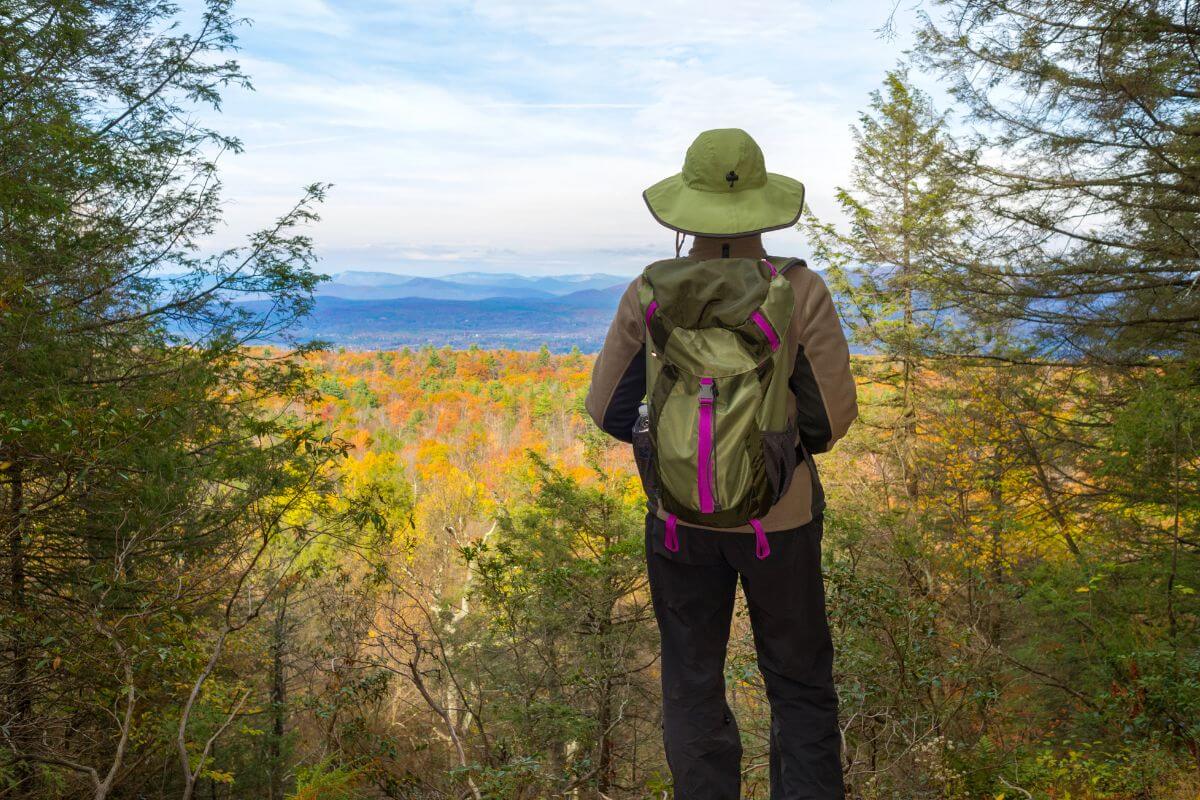
Ipasha Falls is a nature lover’s paradise. The plentiful hiking trails offer routes for beginners and experienced hikers alike, each unveiling the untamed beauty of the area. If you’re chasing waterfalls or just want a stroll through Mother Nature’s art gallery, Ipasha Falls has it all.
Continental Divide National Scenic Trailhead
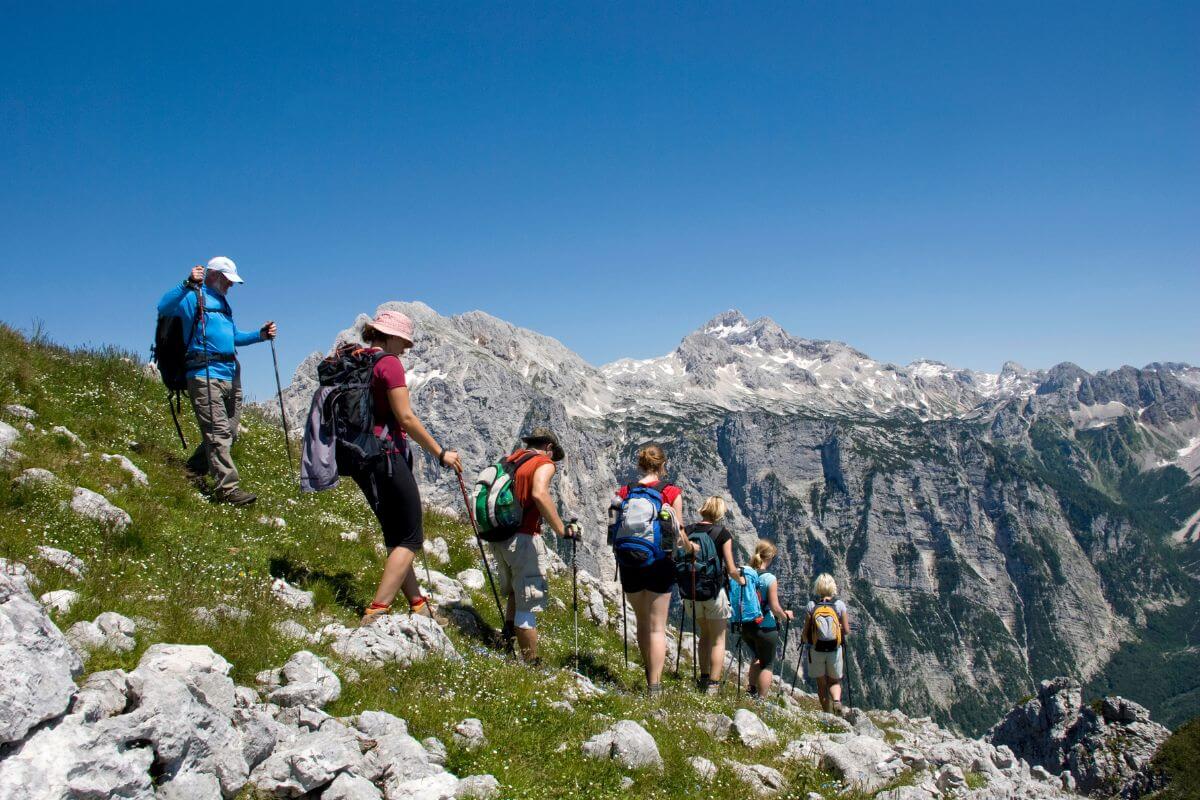
| Attribute | Details |
|---|---|
| Distance | 19 miles (30.58 km) |
| Difficulty | Challenging |
| Trail Type | Out and Back |
The 3,000-mile-long Continental Divide National Scenic Trail is like the main artery of a country, connecting the US and Mexico and also Montana and Canada. It’s like you’re taking a nature road trip on foot!
Think of Glacier National Park’s remote beauty as a bubbling geode and the Continental Divide Trail as a glittering vein leading directly to it. Do you need more convincing that this is a must-experience sight?
To start this gorgeous hiking escapade, you’ll enter through the Two Medicine Campground trailhead that leads alongside the tranquil Two Medicine Lake or the famous Cut Bank Campground. Either way, you’ll be in for a visual treat!
As trailheads on the Continental Divide often offer directions both north and south, I’d recommend carrying and studying a topographical map to ensure you’re on the right path toward Ipasha Falls. There’s nothing worse than enjoying the hike, only to find yourself in the wrong state!
Trail to Ipasha Falls: This is no stroll. The stretch leading to Ipasha Falls spans approximately 19 miles, making this a challenging but incredibly rewarding journey. Though the exact elevation gain is unknown, the trail is best suited for those who love the great outdoors, the views, and, in true Montana fashion, a bit of effort for the ultimate payoff.
Keep in mind that this hike is only a segment of the longer Continental Divide Trail. So, if you’re keen on experiencing more of the Continental Divide, you’re in luck!
Waterton Valley Trail
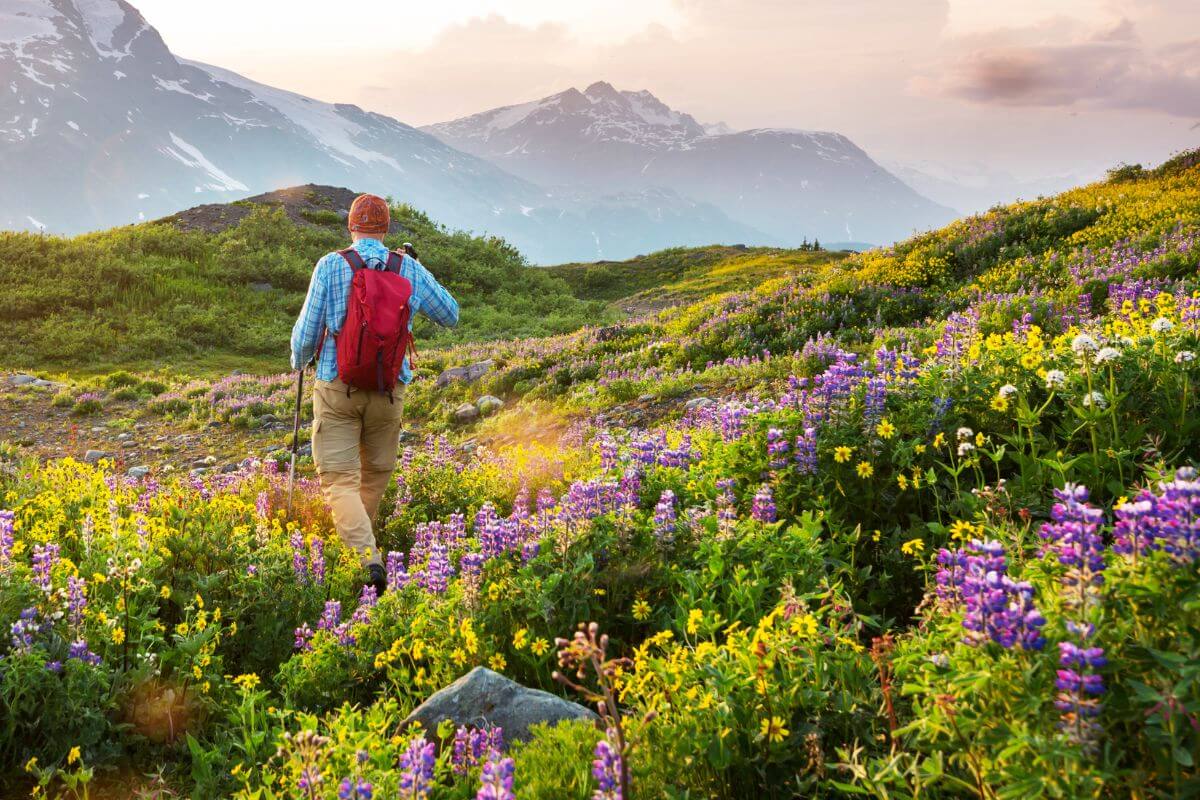
| Attribute | Details |
|---|---|
| Distance | 26.8 miles (43.13 km) |
| Elevation Gain | 5,472 ft (1,668 m) |
| Difficulty Level | Challenging |
| Trail Type | Out and Back |
The Waterton Valley Trail serves as a vital artery through Glacier National Park, connecting various stunning destinations such as Stoney Indian Pass, Atsina Lake, Mokowanis Lake, and Stoney Indian Lake.
It also offers access to the unofficial trail leading to the mesmerizing Ipasha Falls. However, embarking on this adventure demands thorough preparation and caution.
Hikers venturing onto the Waterton Valley Trail must come equipped with ample supplies. This includes provisions for food, water, extra clothing, and full camping gear. Given the remote nature of the trail, ensuring water sterilization and purification methods are available is crucial.
Carrying emergency equipment and a GPS locator is a necessity, as the rugged terrain and isolation can pose risks, especially for solo hikers.
Covering a length of 26.8 miles, with an additional distance to Ipasha Falls, the trail is considered challenging. Most hikers spend around 13 and a half hours navigating its twists and turns. Despite its difficulty, many find solace and joy in the solitude of the trail, relishing the opportunity to immerse themselves in the pristine wilderness.
For those considering tackling the Waterton Valley Trail, the optimal time to do so is between May and September. During this period, the weather is generally more favorable, and the trail is more accessible, allowing hikers to fully appreciate the splendor of Glacier National Park.
Activities You Can Enjoy at Ipasha Falls
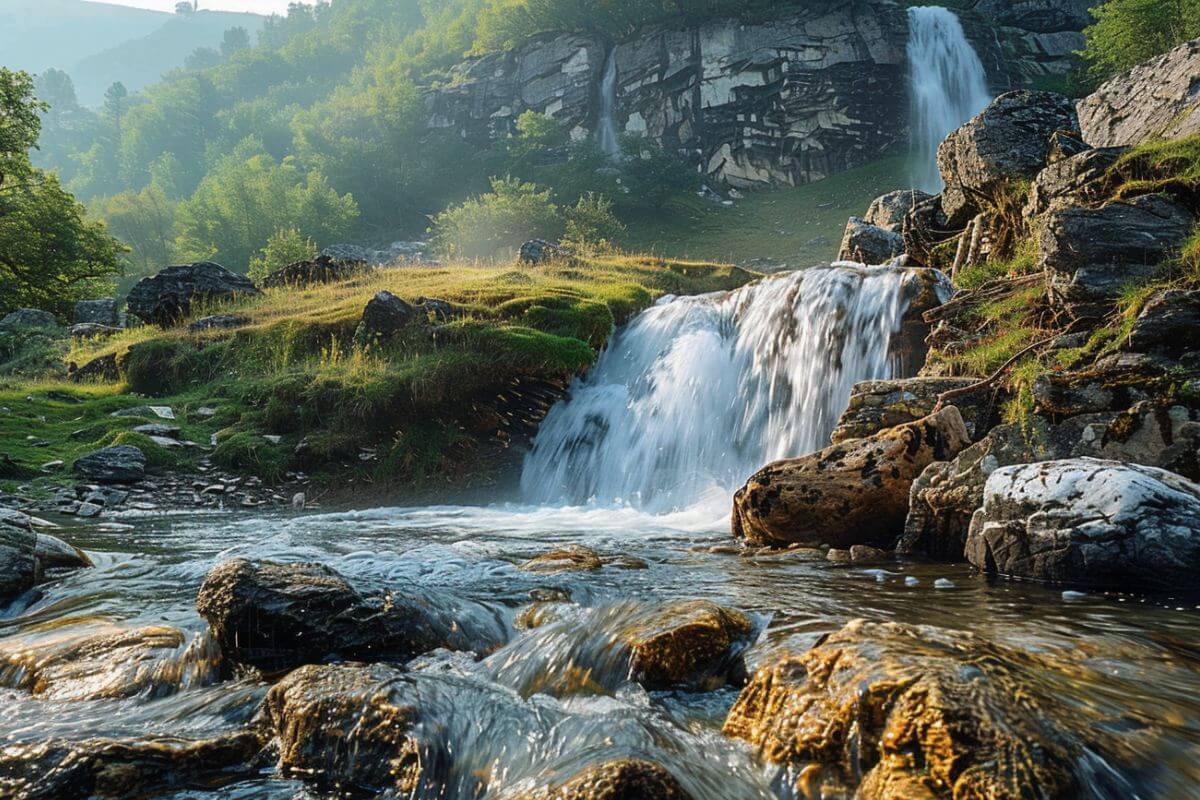
Immersed in the untamed beauty of Glacier National Park, Ipasha Falls offers a tranquil sanctuary for outdoor enthusiasts seeking adventure and solitude.
While the highlight undoubtedly remains the mesmerizing cascade of water plunging into the depths below, visitors can also partake in a variety of activities to enhance their experience amidst this remote wilderness.
1. Swimming

If you’re the type who brings swimwear everywhere, you’re probably wondering about pool options at Glacier National Park. I get it, the sun’s out, and you’re ready to jump in. I hate to be the bearer of bad news, but Ipasha Falls, while daringly lovely, isn’t the best for swimming.
Technically, you can attempt a dip there, but trust me, the undercurrent is no joke. Waves are powerful and that’s a disaster recipe for even the most experienced swimmers. But worry not, nature lovers; Glacier National Park has thrown a bone to swimmers in the way of safer alternatives:
- Ipasha Lake
- Margaret Lake
The waters in these parts don’t sport the same intense undercurrents, allowing you to enjoy a safer and more relaxed swim experience.
2. Boating
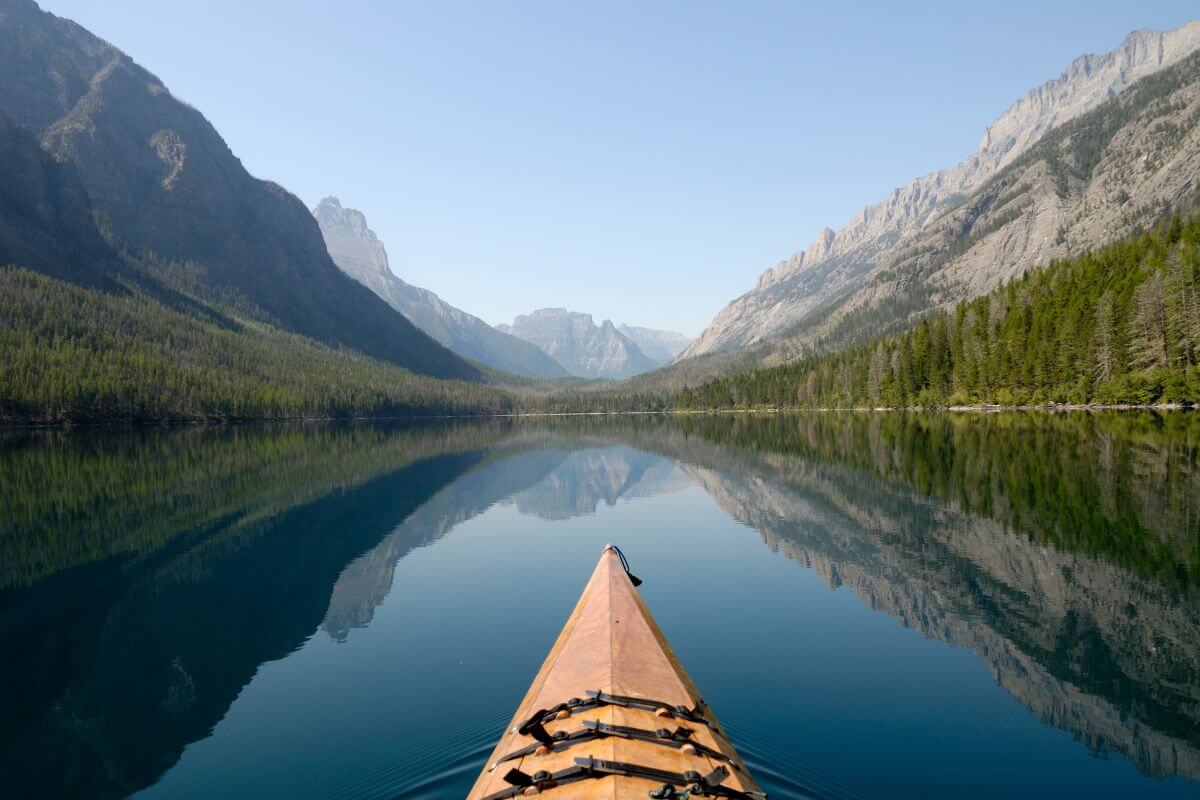
When we talk about having an adventure in the lakes of Glacier National Park, it’s like opening a treasure chest full of possibilities. There’s more than just hiking here – you can also hop onto a boat and explore the waters. Glacier has loads of lakes and streams, perfect for a day of water fun.
Let’s get to the exciting stuff: comparing different boating spots in Glacier National Park. Here’s a quick rundown:
- Kintla Lake – You can rent canoes here, and it’s best to visit from late May to June.
- Lake Josephine – They’ve got paddleboats available, and it’s great to visit from June to September.
While boating on lakes might seem easier, there are still challenges. It’s possible to boat in Ipahsa Lake, but not many folks do it because you have to carry your boat onto the lake. That’s quite a workout!
My local friends always recommend Kintla Lake and Lake Josephine, not just because they’re stunning, but also because they’re easier to reach. At Kintla Lake, you can rent a canoe, and at Lake Josephine, they’ve got all sorts of options, from kayaks to paddleboards.
3. White Water Rafting
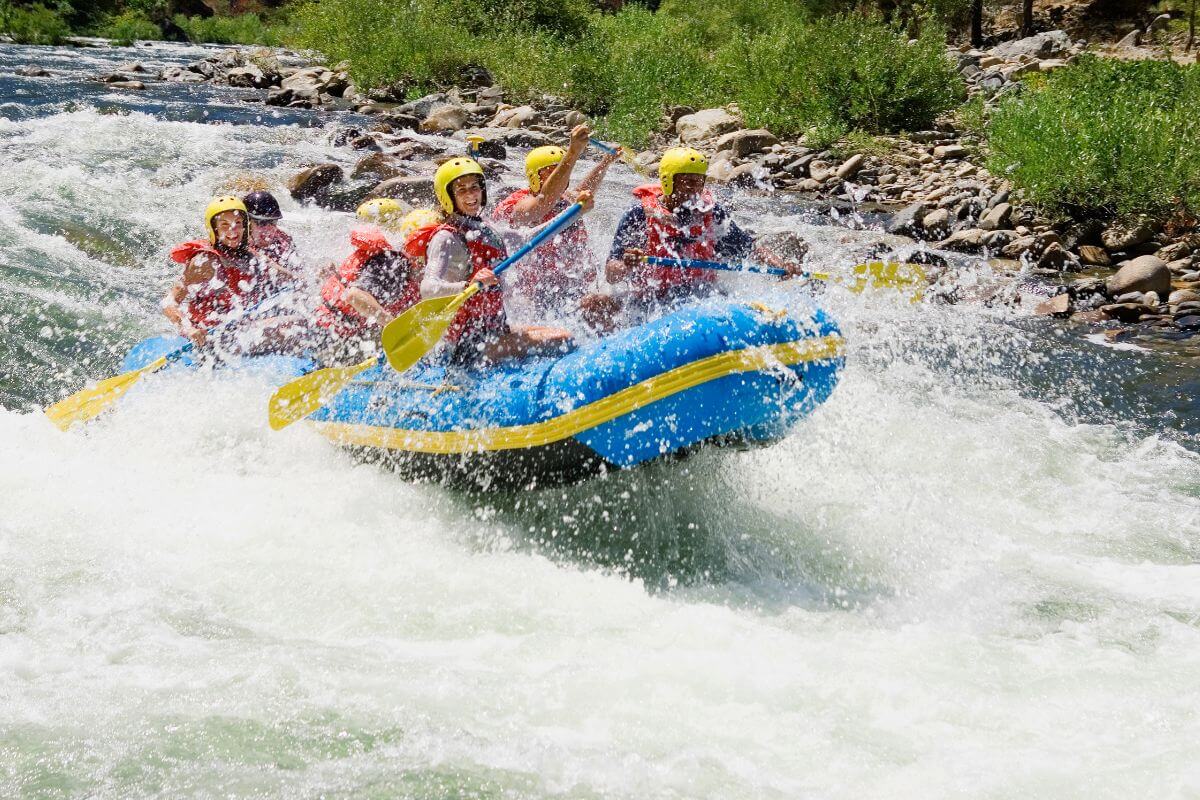
For those craving even more adventure beyond hiking to Ipasha Falls, whitewater rafting is an exhilarating option to explore.
Numerous companies in the area offer a variety of trips, ranging from one-day excursions to multi-day adventures. These trips cater to different preferences, with options for full-day, half-day, or multi-day outings, ensuring there’s something for everyone.
Many outfitter companies go the extra mile by providing add-ons like snacks, meals, and even lodging as part of a comprehensive package. It’s wise for individuals to carefully consider which options best suit their needs and preferences before booking.
Whether it’s a thrilling day trip or an immersive multi-day experience, whitewater rafting offers an unforgettable way to experience the wild beauty of Glacier National Park.
4. Fishing

Fishing enthusiasts will find plenty of opportunities to cast their lines both near Ipasha Falls and throughout Glacier National Park. Ipasha Lake near the falls is a prime spot for fishing, while rivers, streams, and other lakes throughout the park also offer excellent fishing grounds.
Before heading out, it’s essential to ensure you have an up-to-date fishing license for Montana, as required by state regulations. For those seeking guidance or expertise, Glacier Guides or Get Your Guide offers services for hiring fishing guides in various areas of the park, providing invaluable knowledge and assistance to enhance your fishing experience.
Some of the best fishing spots include:
- Logging Creek – Logging Creek in Glacier National Park is a quiet spot where you can fish for different kinds of trout.
- Yaak River – The Yaak River flows through Montana’s wild places. Here, you can catch trout while enjoying the beautiful scenery.
- Mary Lake – Mary Lake is a pretty lake in Glacier National Park. It’s a good place to fish for trout in the peaceful mountains.
- Trout Lake – At Trout Lake, you can guess what you’ll find: trout! It’s a lovely mountain lake where you can enjoy fishing in the fresh air.
- Stillwater River – The Stillwater River winds through valleys and mountains, offering great fishing spots for trout and other fish. It’s a beautiful place to relax and fish.
- Flathead River – The Flathead River is famous for its excellent fishing. People come here to catch big trout and other fish while enjoying the stunning scenery.
Each location boasts its unique charm and abundance of fish species, promising memorable fishing adventures amidst the park’s stunning landscapes.
5. Camping
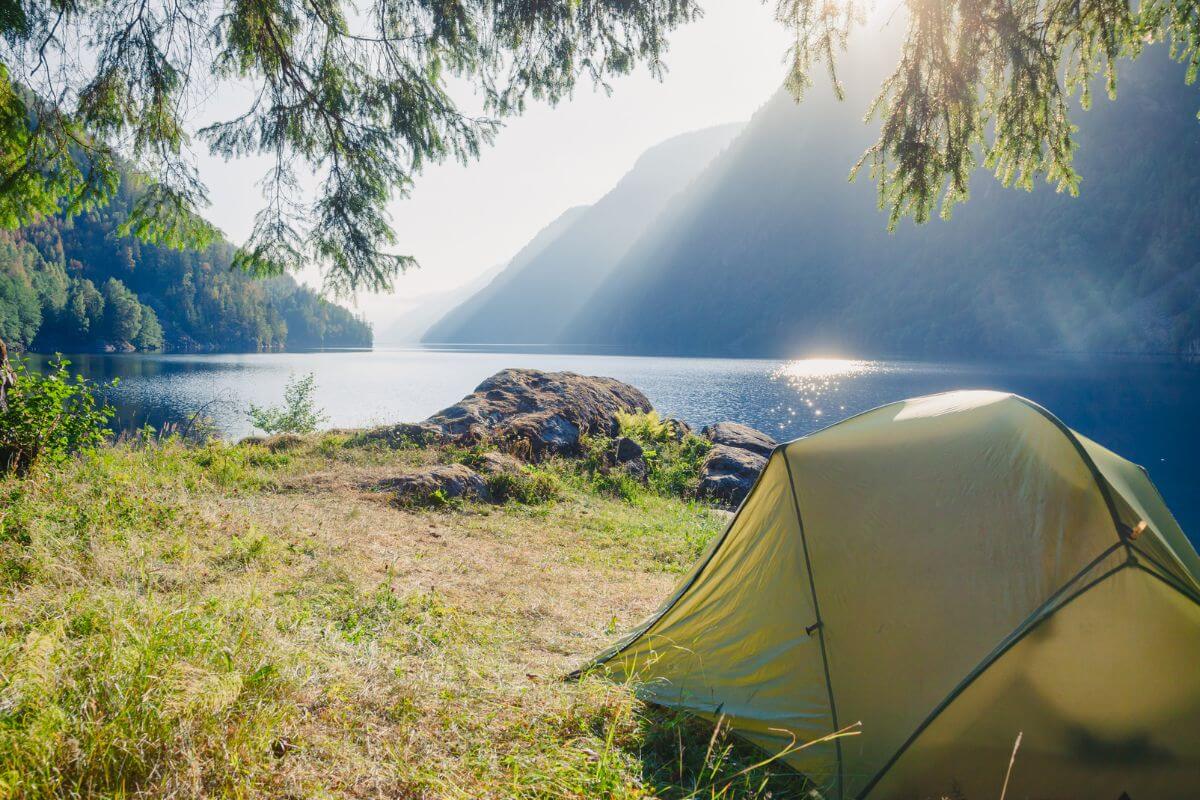
Camping is a necessity for those venturing to Ipasha Falls, with backcountry camping being the norm along the way. However, it’s important to note that these sites lack full amenities like bathrooms and campfire rings. While some backcountry campsites are marked along the trail, there are also options for “open” backcountry camping in undesignated areas.
Given the remote nature of Ipasha Falls within the park, visitors must be prepared for wilderness encounters, including wildlife such as bears. It’s crucial to protect food from bears, carry bear spray, and take other precautionary measures to ensure safety while camping in this area.
Glacier National Park offers hundreds of designated campsites throughout, including RV sites, tent-only sites, and other backcountry options. However, many campgrounds operate on a first-come, first-served basis, so arriving early is recommended.
For those with reservations, booking early guarantees a spot upon arrival, ensuring a hassle-free camping experience amidst the park’s stunning landscapes.
6. Horseback Riding
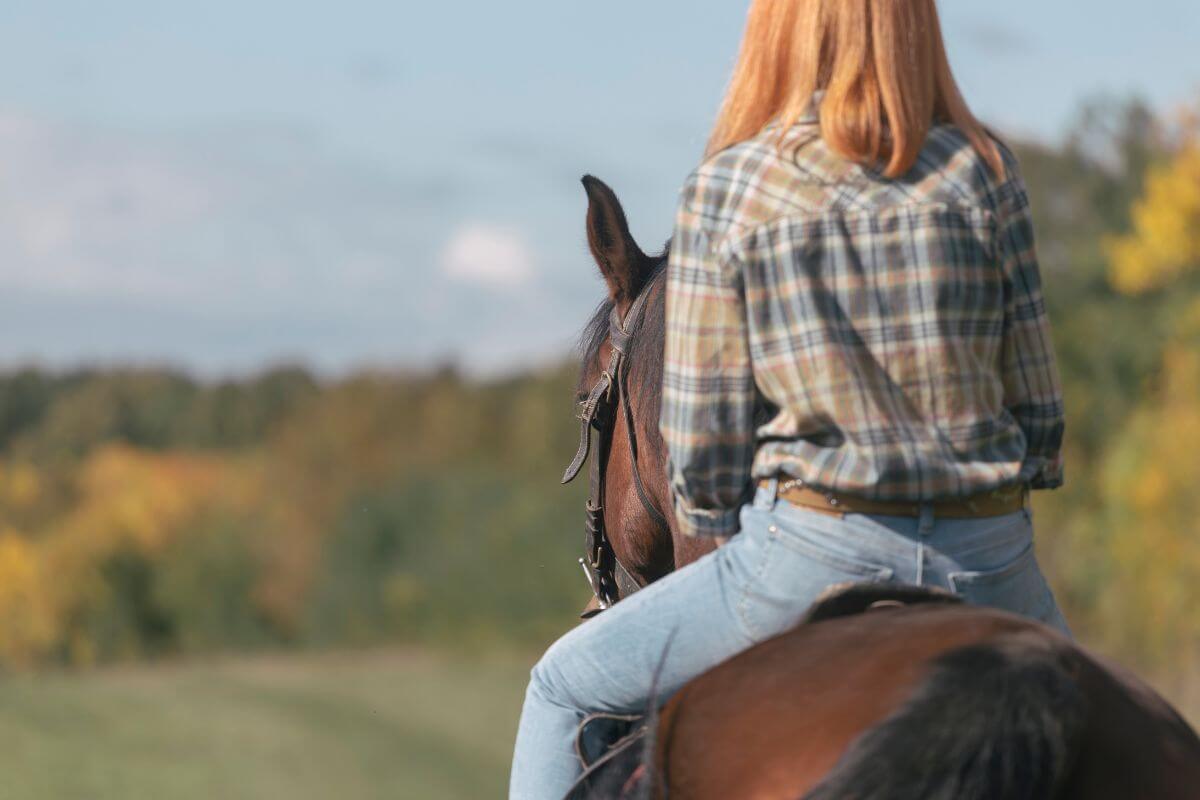
Ready for a wild adventure in Glacier National Park? Let’s saddle up for some horseback riding! Exploring every corner of the park can be tough, but horseback riding lets you see a lot without getting too tired.
Ride through the park’s beautiful trails and soak in views that’ll leave you in awe. I’ll never forget the stunning sights I saw on the Mountain View trail! And if you’re hungry, why not try Cowboy Cookout? It’s the perfect combo of tasty food and incredible scenery.
For the best horseback riding experience, check out Swan Mountain Outfitters. They’ve got starting points at Many Glacier, Apgar, and Lake McDonald, all great spots to start your park adventure. They offer different trail rides for all skill levels, from easy rides like the Lodgepole Loop to more adventurous ones like the Glacier Lookout.
Trail Ride Options by Swan Mountain Outfitters:
- Lodgepole Loop
- Ride & Dine
- Glacier Gateway
- Cowboy Cookout
You’ve got nature unfolding in front of your eyes and the quintessential sound of hooves, what more could you ask for?
Ipasha Falls, Montana Final Thoughts
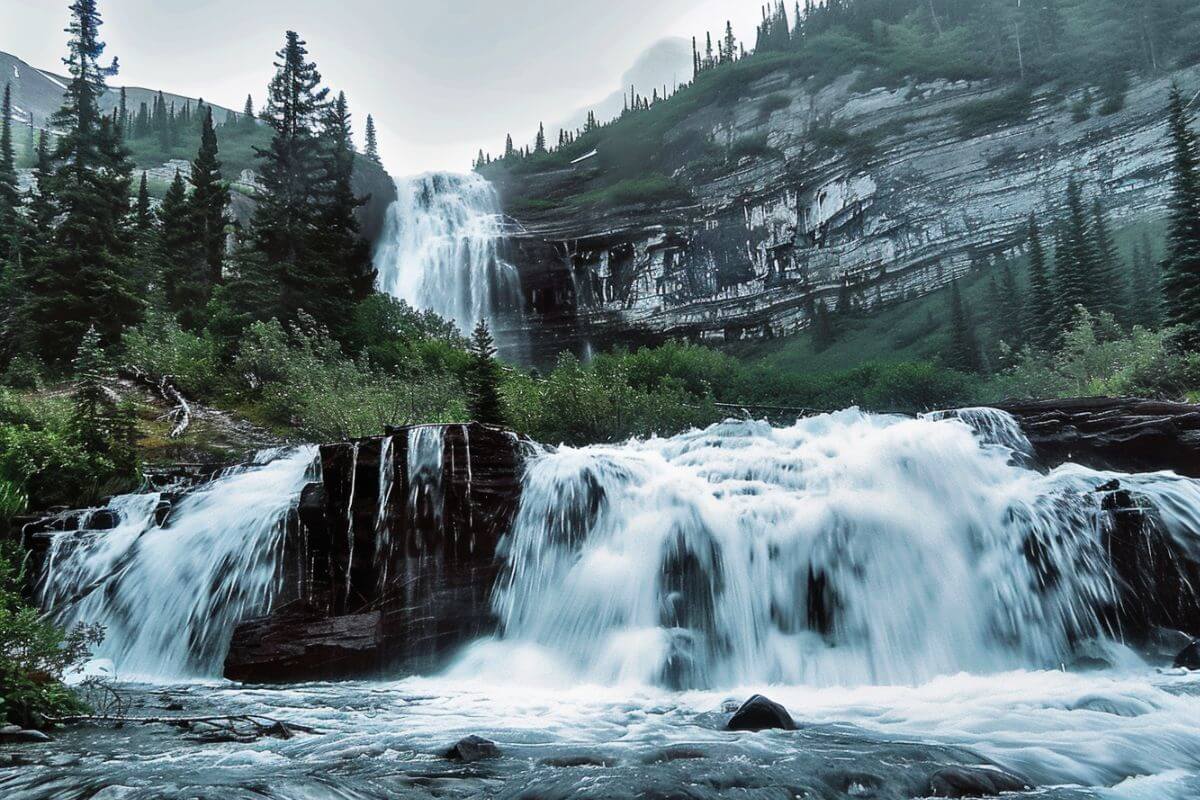
Ipasha Falls in Glacier National Park, Montana, is a stunning example of nature’s beauty. Hidden in the park’s remote wilderness, reaching the waterfall requires careful planning and determination.
The challenging trails, like the Continental Divide National Scenic Trail or the Waterton Valley Trail, need strong legs and good navigation skills, along with enough food, water, and emergency supplies for long hikes.
Preparing for the trip is crucial. You’ll need sturdy hiking boots, maps, plenty of food and water, and a good understanding of the weather. Safety comes first, always.
At Ipasha Falls, there’s plenty to do: swimming, boating, fishing, and camping. However, each activity needs planning and awareness.
The falls themselves are breathtaking, a reward for those who make the journey. They stand as a reminder of the untouched beauty of Glacier National Park, waiting to be explored and enjoyed by all.
Ipasha Falls, Montana FAQs
1. Can You Swim in Ipasha Falls?
Swimming in Ipahsa Falls is not recommended as it is a waterfall and can be dangerous due to strong currents and unpredictable conditions.
2. What Is the Biggest Waterfall in Glacier National Park?
The biggest waterfall in Glacier National Park is Bird Woman Falls, measuring 560 feet (170 meters) in height. This majestic waterfall is located west of the continental divide in Glacier National Park and can be viewed from a distance of 2 miles (3.2 km) when driving on the Going-to-the-Sun Road.
3. Is Ipahsa Falls Open to the Public?
Yes, Ipasha Falls is open to the public for exploration and enjoyment. However, accessing it requires a challenging backcountry hike along unmaintained trails within Glacier National Park, Montana.
If you enjoyed this content, discover more captivating articles about Montana below:

